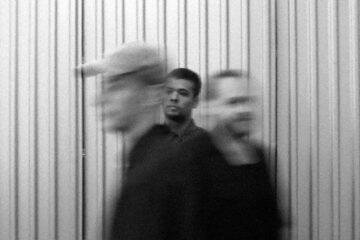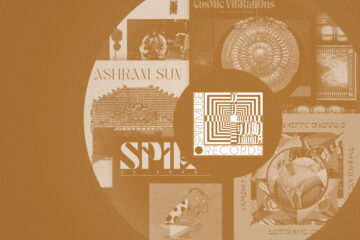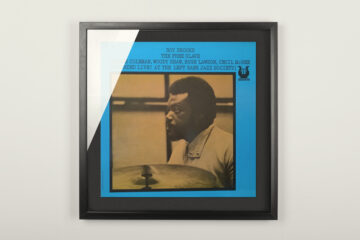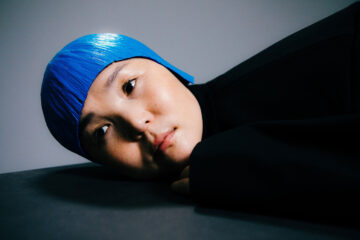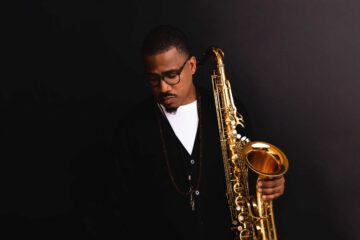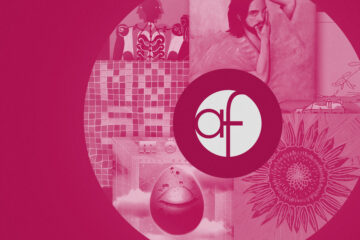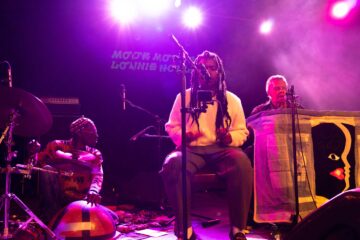The New York Times recognised it early on: the work of singer ganavya feels like a prayer. That was their headline at the end of last year, when the third album by the New York-born, South India-raised Ganavya Doraiswamy was released. Daughter of a Temple (released on Nils Frahm and Felix Grimm’s LEITER label) marked a breakthrough moment. She was no newcomer, though. Her voice had already graced works by Jorge Pardo and Esperanza Spalding. She appeared in 2023 alongside the enigmatic soul collective SAULT and had long been recognised in the US as a community builder.
Related reviews
In 2020, she became the first artist to win a Latin Grammy for a song sung in Tamil, thanks to a guest appearance on a track by Puerto Rican rapper Residente. Germany – often a little slower on the uptake – only began paying wider attention after a few rare concerts, the release of her second LP like the sky I’ve been too quiet (March 2024), and her performance at the Monheim Triennale.
In conversation, ganavya often returns to the formative years she spent in Tamil Nadu, where she lived until age 14. Her language is steeped in spiritual and religious imagery. As a child, she studied Harikatha, an art form that fuses storytelling, poetry and devotional singing, and performed it along the Varkari pilgrimage route. She and her family would walk for days, singing devotional poetry without interruption.

Spirituality and technology
Sound and music, she explains, were always present in her family’s life. Someone would often break into song in what she describes as beautiful absentmindedness. She adds: “The deepest silence in my life often comes in the form of calm – and I’ve found perfect inner calm through singing.” A paradox perhaps, but one that begins to make sense once you immerse yourself in her music. Repeating mantras, open tunings, and a natural sense of flow characterise her compositions – songs that seem to contain silence within them.
This constant stream of sound fuels ganavya’s inspiration – and not just in a musical sense. Even the tone shift of airplane engines descending toward Lyon finds its way into her observations: she notes the semitone dip of the engine pitch just before landing, in an email sent days before her performance at Enjoy Jazz in Heidelberg.
»If music is devotion, and devotion is service, if healing is the turn toward love – then music might be healing too.«
Ganavya
At Enjoy Jazz, she presents songs from Daughter of a Temple as well as from Nilam, her most recent album, released in May. The two records are closely related – like siblings, sharing a lineage but distinct in shape and character. Daughter of a Temple was a “study of Alice Coltrane’s music”, she explains – a deeply personal yet collective journey into the heart of spiritual jazz. Much like Coltrane’s own music, whose breadth and mysticism continue to resist narrow classification. ganavya herself hesitates to identify with the term: “I don’t know enough about the words ‘spiritual’ or ‘jazz’,” she says, “but some of the teachers of the music had a relationship to that.”
Spirituality and jazz, she says, are both technologies for liberating the heart and mind. Never esoteric, she openly questions ideas of “healing” so often projected onto this kind of music. “That word scares me,” she admits – before taking a long pause, letting the thought breathe and evolve. Finally, she concedes: “If music is devotion, and devotion is service, if healing is the turn toward love – then music might be healing too.”
Thirty musicians took part in the recording of Daughter of a Temple, which The Guardian named one of the ten best global albums of the year. Nilam, on the other hand, is a much more intimate project – recorded as a trio with Charles Overton und Max Ridley, presenting songs shaped over years and transformed through live performance.
Whether in large ensembles or small constellations, ganavya communicates a unique sense of warmth and expansiveness – a musical language in which love is a recurring word. Asked about this, she responds with rare brevity: »Love is central to life.« Perhaps another form of prayer.
Translated from the original German. Some phrasing may differ due to the nature of translation.





